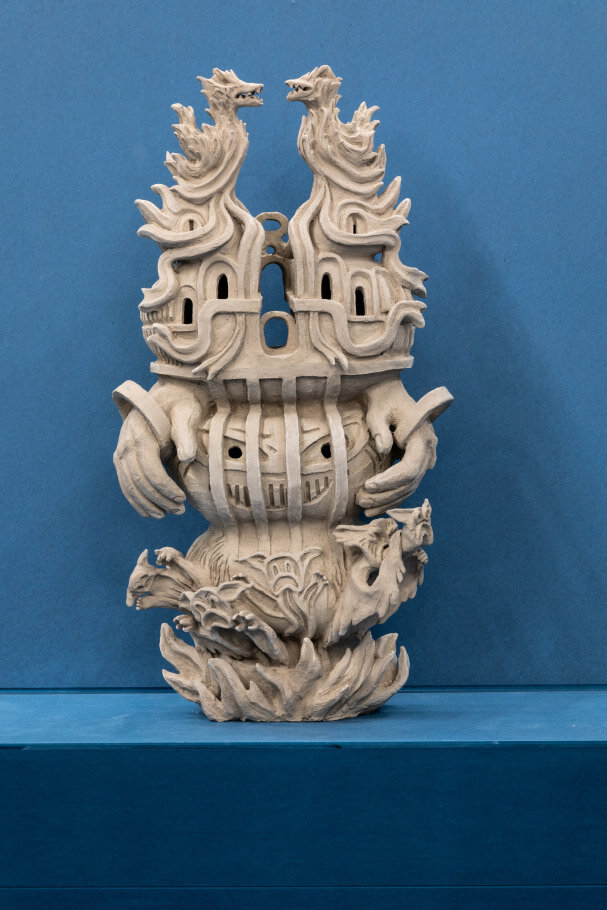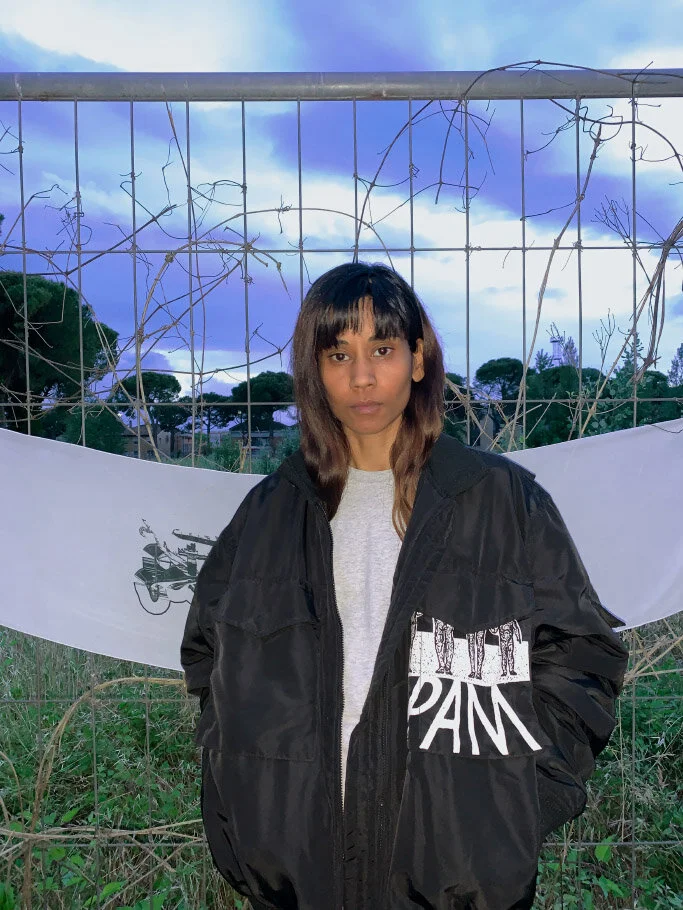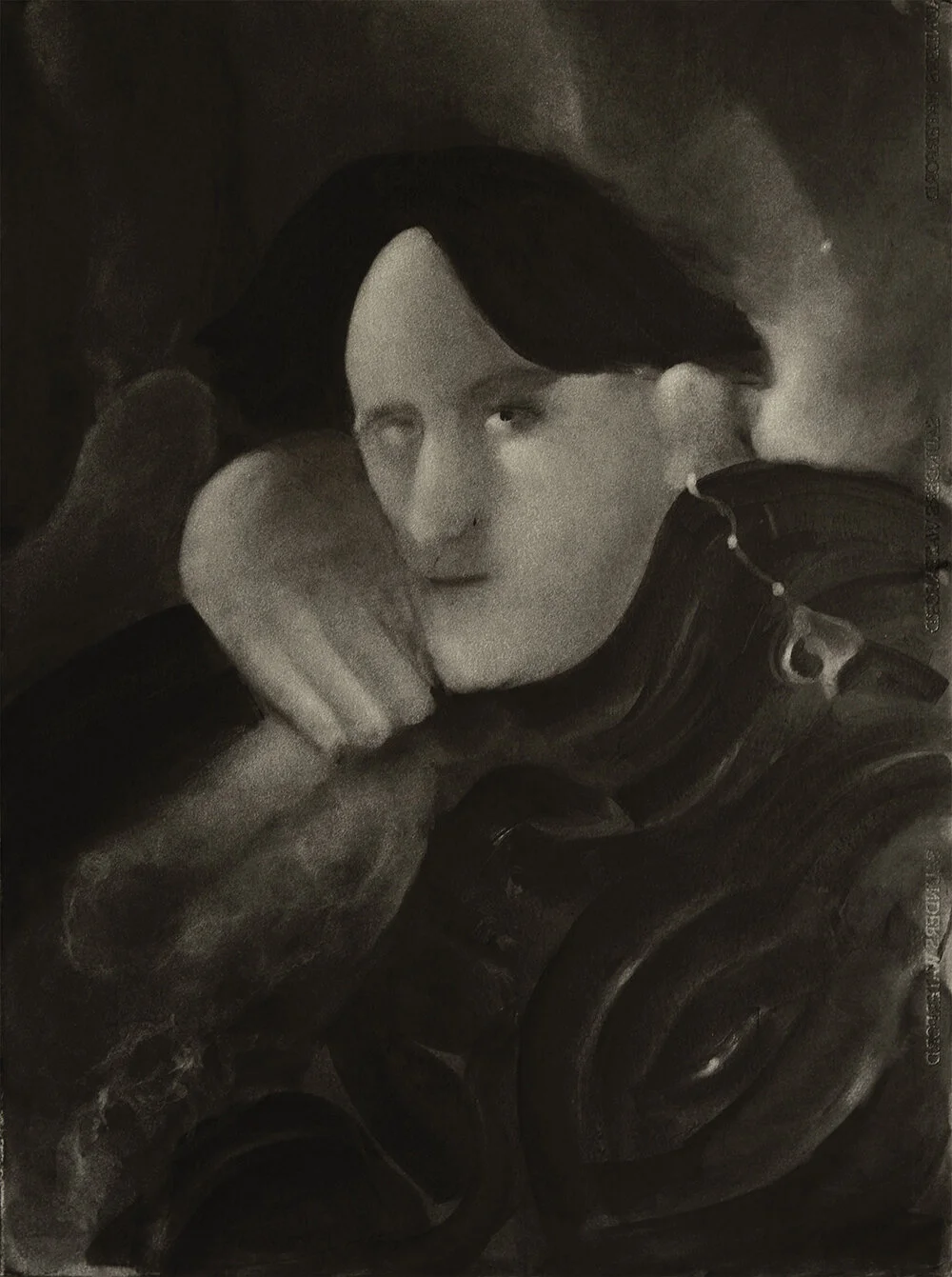Sharon Van Overmeiren
The qualities that Sharon Van Overmeiren ascribes to her sculptural practice are those of liberation and expansion. Sharon plays with the genesis of fiction and captures thoughts and issues that circulate in the present, investigating the origin of representation and the processes behind the creation of stories within her sculpted objects. As vessels of human expression, symbols and fictions are the driving force behind her artistic production. Sharon’s practice is a way to question facts surrounding the categorization and transmission of knowledge, and to unpack the restrictive role of authorities in light of today’s proliferation of sources of information. Together with a radical refusal of hierarchies, the purpose of Sharon’s work is to free the objects that inhabit our world from predetermined boundaries, and to broaden the possibilities of interpretation by interrogating the extent of the autonomy of matter.
Thinking about the limits of the human mind, your work appears to draw connections – and create disturbances – between those customs that establish palimpsests of symbols, like mythology, systems of belief, and many art forms, as a way to try and create order in the world, to locate things and give them names. Where does your interest in questioning these kinds of innate mechanisms stem from?
The disconnection of forms from their theoretical guidelines are subjects that draw my attention and, especially this moment in history, offer exceptional possibilities to dig deeper. In the past knowledge from artifacts derived from textbooks and institutions that were originally limited in scope and imposed a single structure of experience on their consumer. In the digital age things are quite different. Anyone can roam the world wide web starting from the splendors of Egypt to Mars attack and back in a very limited timespan. In the present-day the capacity is extremely spacious and therefore hierarchies of “high’ and ‘low’ art are likely to fade. The imagery of animals constantly reoccurs in my practice and is an attempt to fabricate something we have never experienced before. Perhaps a cognitive revolution could generate out all of this - and pondering of an alternative as a replacement. The diversity of nature is the most intriguing and fascinating form of existence and more recently I have been daydreaming of an overwhelming brainwashing virus spreading and erasing all knowledge in terms of how cultural luggage would be reorganized by form and functionality. These thoughts keep me up and running most afternoons.
The functionality that humans assign to inanimate matter, the expressiveness of objects, and of objecthood per se play a central role in your work. Could you speak about your interpretation of sculpture making? Why has it become your medium of choice?
The origin of representation is rooted in the starting point of the era when human kind distinguished themselves from animals. Our collective imagination created fiction - like a third person - as animals don’t possess this trait. Human creatures constructed imagery and therefore some of us became sculptors. Symbolism was conceived as a vessel for something that was not present. Sculpted objects address matters that do not entirely exist but embody a thought that corresponds to the idea of expressing oneself. Working in the artistic realm helps me to orientate and capture what is circulating in the present. Molding amplifies my personal impressions of the current world and liberates + eliminates all imposed boundaries. This makes my heart beat faster.
Your works often present themselves to the viewer through playful references and ambiguous lineages that seems to challenge a very human pursuit – that of certainties. It’s as if their origin could potentially span centuries, which makes it tricky to pinpoint them. What drives you to engage with the perception and measurement of time?
Questioning and criticizing facts is embedded in my daily practice, as I apparently plant the underlying commentary in a cheerful manner into my sculptures. Deceiving the viewer is also part of the bigger picture. I'm not aiming to generate ambitious statements with my works but what’s more important is that the viewers’ perception and personal storytelling are transmitted into the sculptures. That’s why mostly children are my biggest fans. Museums often categorize objects by date, location or according to false dichotomies like “decorative” and “fine arts”. They guide the encounters between artifacts and visitors with wall labels filled with accurate information, visible in every global metropolis. As a matter of fact I don't relate to these viewpoints, as they feel restrictive and pedantic and in my presentation I often criticize them. The essence for me deals with freedom of interpretation and my ultimate dream is to free all objects - like WWF but for ancient sculptures. Most likely I struggle with authority even in the world of inanimate matter.
In my eyes your fictional sculptures act like ghosts to some extent, in the sense that they nudge and mock the observer. Sometimes they seem to be asking or hiding something from the viewer, only they’re doing it in their own language. How do you frame this type of communication, and what fascinates you about the possibility of building narratives by these means?
Creating sculptures is based on a fictional scenario and it’s legitimate that my eyes only exist as characters for my invented stories, as they get molded into a certain shape and content. They operate as specific props, for example as in the presentation with Parasite 2.0 at miart fair in 2019, together with Damien & The Love Guru. The initial idea was to handcuff the sculptures against the MDF walls as prisoners of the art fair. In most cases after the end of an exhibition, I start to realize that the stories function as a motivation to produce the works. When they are out there in the ring - I need to learn to let go and let the works fly away from their mother’s nest and become independent objects on their own.
interview VERONICA GISONDI
What to read next













